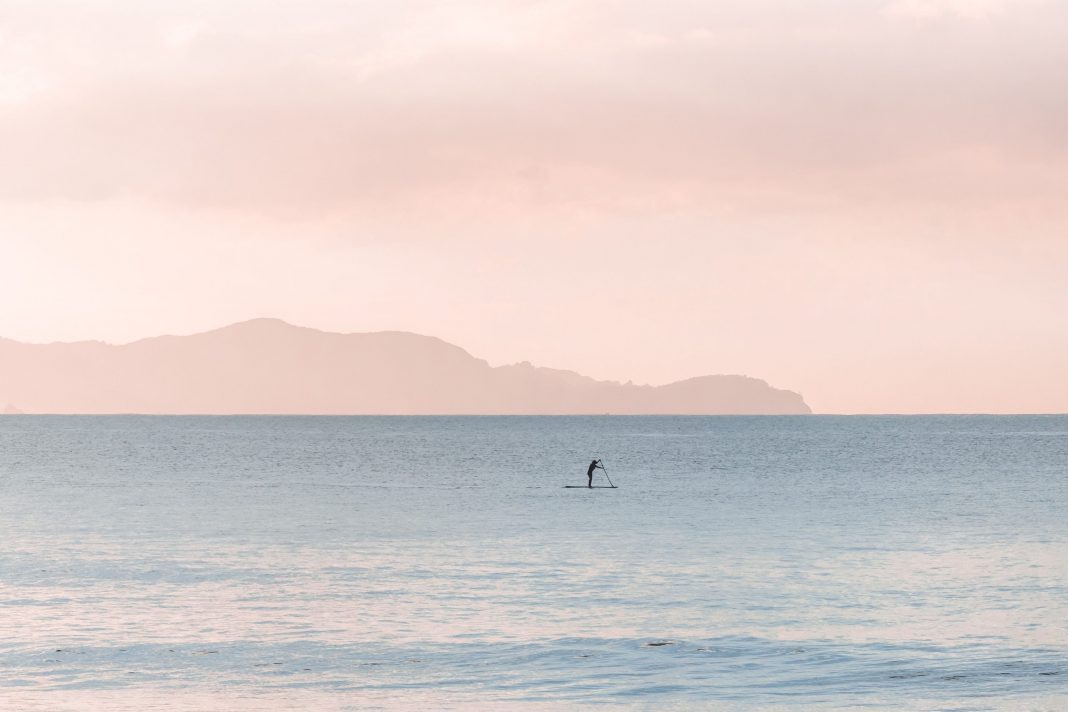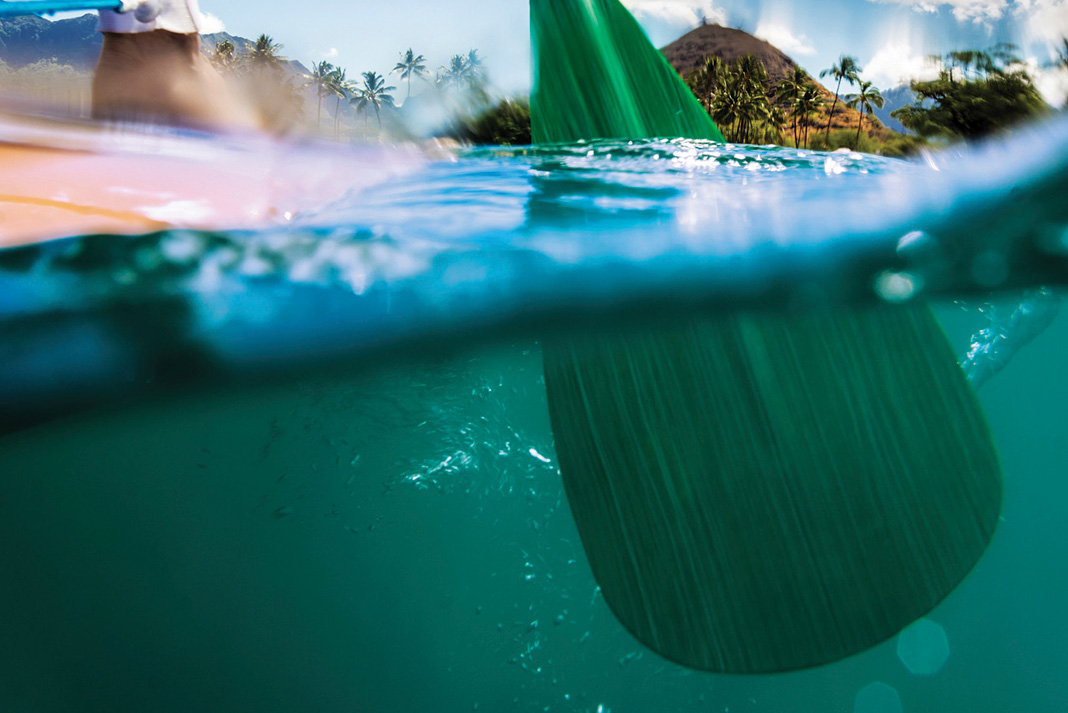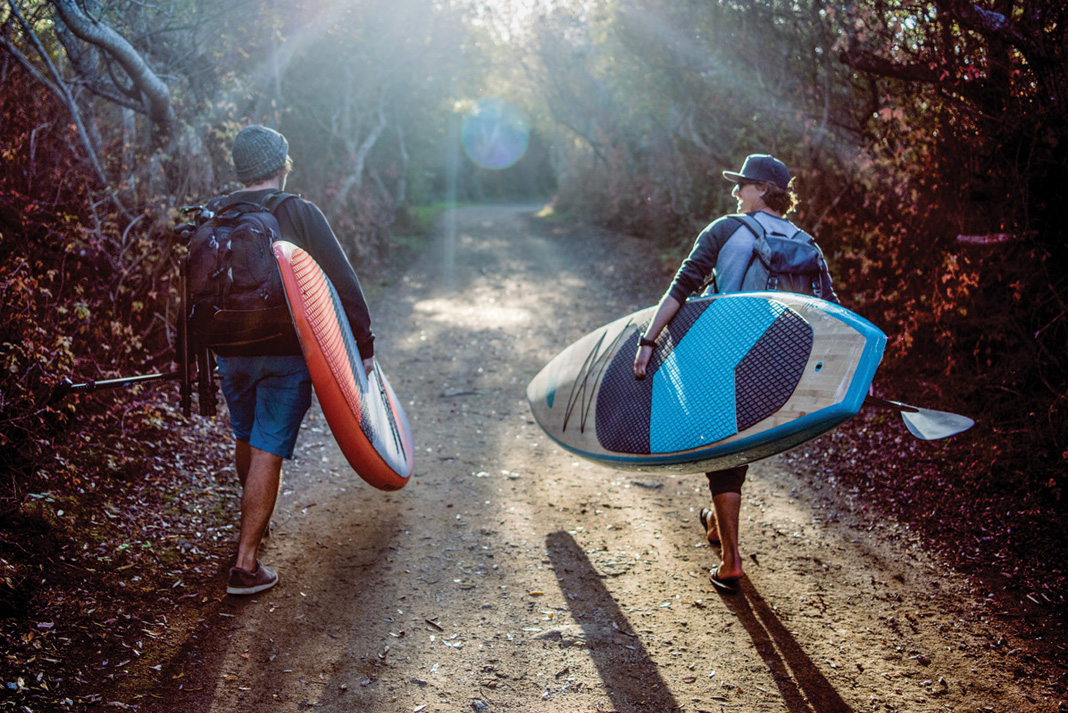Think all SUP paddles are created equal? Not quite. Making your way through the jungle of available paddles requires some thought. Whether for relaxing yoga or an ocean-spanning expedition, we’re here to help you choose the perfect paddle. Read on for the factors to consider before making your next purchase.
The ultimate SUP paddle buying guide: Length, adjustments & materials
Paddleboard paddle construction
Your paddle’s construction dictates more than just price—it also dictates performance. At the low end of both the performance and the price range are paddles with aluminum shafts and plastic blades. They’re heavy, but they’re rugged.
These are perfect starter paddles for someone just getting into the sport, or someone who plans to loan their board out a lot. However, the flexible blade and the weight of the paddle makes its performance rather lackluster.
Fiberglass SUP paddles
Fiberglass is a step up in performance. Significantly lighter than aluminum, expect it to be a bit less durable, and a bit stiffer. Avid paddlers often find a compromise in fiberglass SUP blades between price, durability, and performance.

Carbon SUP paddles
A composite combination including carbon fiber is for the serious paddler. Price-wise, carbon SUP paddles are a major jump, but the added performance is worth it. Pure carbon is extremely stiff, and also fragile. Composite blends, such as carbon and aramid, are more durable and provide some forgiving flex.
Wooden SUP paddles
Wooden SUP paddles are also available, either as simple, nearly blank slates, or handcrafted works of art. Performance wooden paddles typically combine composite fibers or laminations into their construction to improve life span and reduce weight.
Choosing the best SUP paddle length
Most SUP gurus will tell you that paddle length comes down to personal preference, but generally your paddle should be about eight to 10 inches taller than you are.
“A fun rule of thumb is to do a shaka with your thumb on the top of your head,” suggests Blu Wave Paddleboards retail shop owner Aaron Pilon. “The top of your pinky should be in line with the top of the paddle.”
Depending on the type of paddling you do, you’ll need to adjust from there. Surfers often opt for a slightly shorter paddle for surfing, with the grip only about three inches above the head. Touring paddles will need the longest shafts, and racing paddles, as well as recreational paddles, fall somewhere in between.
For paddlers looking to experiment with their boards in a variety of conditions, an adjustable paddle might be the best first choice so you can discover your own ideal length with different types of paddling.
Most fixed length paddles are offered in two-inch increments. If you do opt for a fixed length blade, you may be able to shorten it depending on construction.
“The most common mistake I see when new paddleboarders purchase a paddle is buying a one-piece paddle instead of an adjustable, and not cutting it down to their desired length,” adds Gretchen Gamble, Boardworks’ marketing director. She’s seen newbies trying to ply the coast with 86-inch-long paddles—a size suitable for only the tallest paddlers.

SUP paddle blades
Customers can use width, height, and square inches to compare blade size. Obviously, you’ll get more power with a bigger blade, but you’ll also work harder and can put unnecessary strain on your shoulders. Usually, women’s paddles have a slightly smaller blade size than men’s.
Surfers typically opt for a bigger blade for powerful, quick strokes and for use as a rudder and a brace point. Touring paddlers are at the other end of the spectrum, opting for blades on the smaller end of the size range so they can keep up an efficient stroke all day.
While big blades seem the obvious choice for racing, Blu Wave’s Pilon says otherwise: “A consistent trend is they are going for smaller blade shapes than they were four or so years ago. A lot of the elite racers are going with smaller blades and paddling at a higher cadence.”
Find out which SUP paddle is perfect to help you slice into your next adventure. | Feature photo: iStock





 This article was first published in the 2016 Paddling Buyer’s Guide.
This article was first published in the 2016 Paddling Buyer’s Guide.